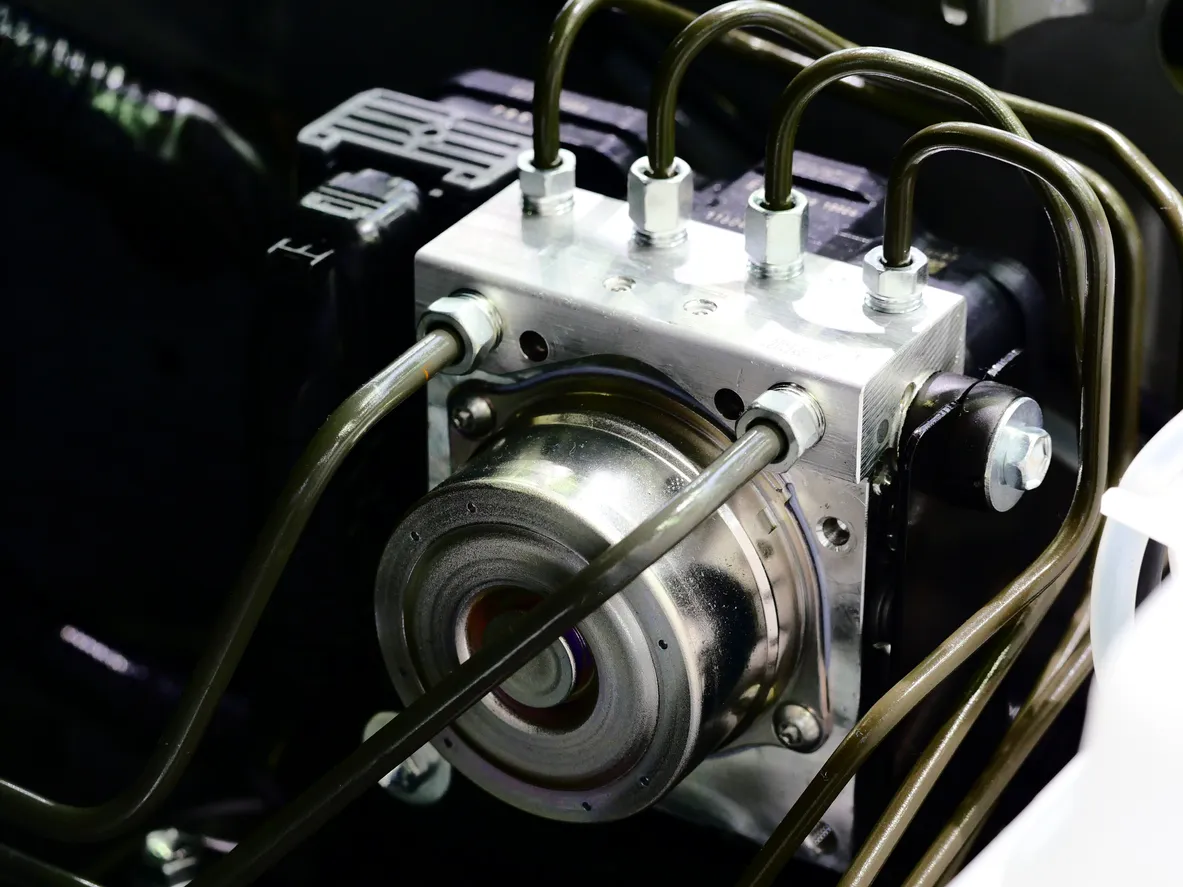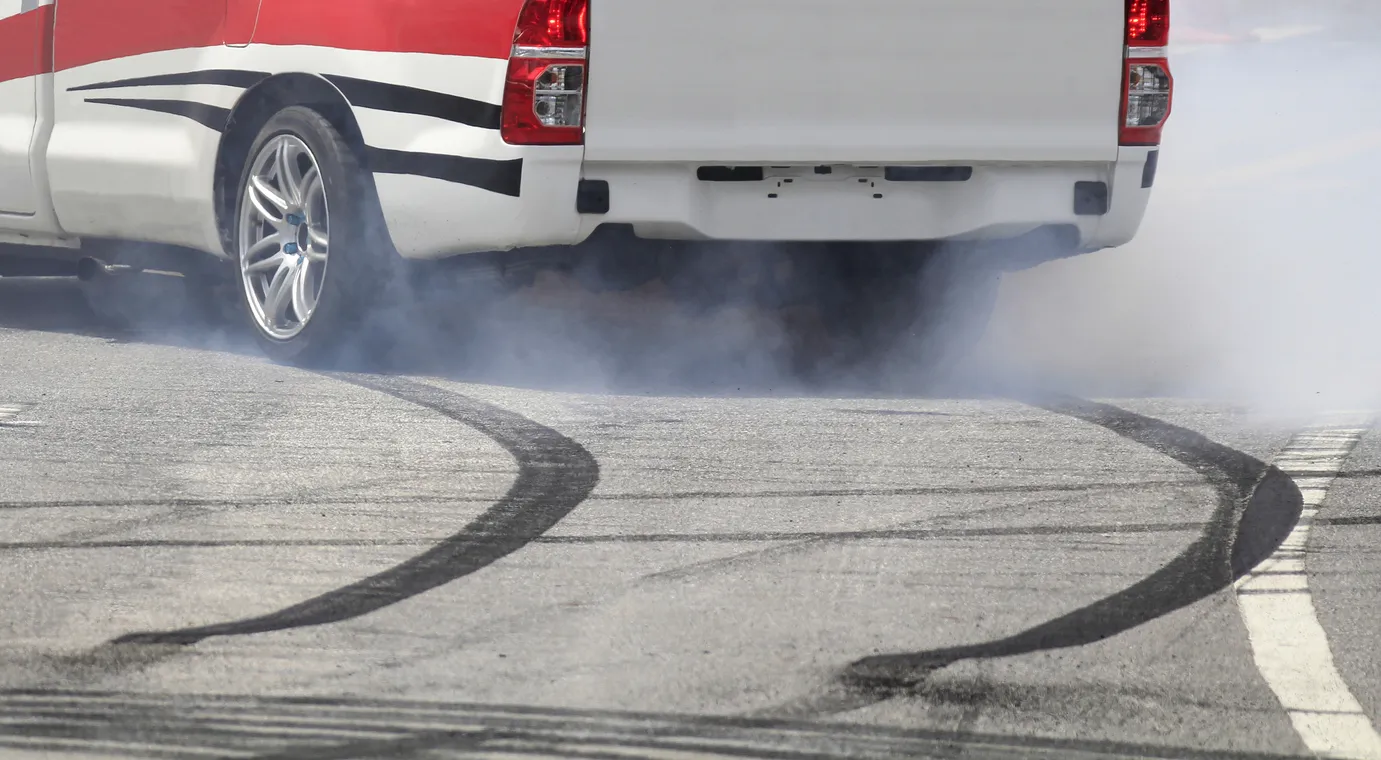How Anti-Lock Brakes Work

Anti-lock brakes were first developed in 1971 and are standard equipment on nearly every vehicle today. They keep your vehicle safe when traveling over slippery surfaces. Without anti-lock brakes, you can't stop as effectively, you are more likely to lose control, and you will struggle to drive safely in more hazardous conditions. This is why the development of this advanced brake technology was so important and why most vehicles rely on the technology today.
What Are Anti-Lock Brakes?
Anti-lock brakes are brakes that turn on and off depending on the traction of your tires. Cars lose control when braking on slippery surfaces because their tires skid. The best way to prevent this from occurring is to stop braking the wheel before it begins to skid. This is impossible to do manually, but through advanced sensors and effective computers, a car can automatically avoid skidding tires by using an ABS system. The system detects when a tire is about to lock up and begin skidding, and it stops applying brake pressure at that tire specifically. Only a short pause in brake pressure is required to prevent skidding from occurring, and then braking can resume. The system enables you to retain control over your vehicle in slippery driving conditions, and it gives you more reliable braking power as well.
How Do Anti-Lock Brakes Work?
Anti-lock brakes are an advanced technology that relies on a series of special mechanisms to work. Each wheel has a speed sensor on it, and your car can determine when a wheel is about to lock up when it slows down much faster than the other wheels. This is because there is more friction between the brake pads and rotors or brake shoes and drums than there is between the road and the tire. The tire isn't creating enough friction to keep the car from skidding, and you go into a slide.
Anti-lock brakes work by detecting when a tire slows down rapidly and cutting off brake pressure to that wheel specifically. ABS systems cause your brakes to pulse at the different tires, and this pulsing keeps tires turning even on slippery road surfaces. It feels a little odd when your brakes pulse heavily, but when you feel that you know you're being protected by your ABS system and you have more control than you would without the pulsing.
How Do Anti-Lock Brakes Help You

If you've ever stomped on bicycle brakes really hard, you probably skidded your tire across the ground. This is especially likely if you stop on dirt or gravel. The same would occur with a car if it wasn't for anti-lock brakes. This special brake system stops your tires from losing traction at any time. The moment you lose traction in your tires, you can't steer your vehicle any longer. This only occurs when your wheel locks up from extreme braking forces, though.
Anti-lock brakes allow your car's wheels to slow down but do not allow the wheel to fully lock up. This is the anti-lock brake, meaning essentially. The system guarantees that your wheels are always turning, even when braking hard. By keeping the wheels turning with your vehicle, you prevent skidding and sliding and loss of control.
The Different Parts of Anti-Lock Brakes
When driving a car with anti-lock brakes, you're using a variety of different components working together. There are specialized valves, speed sensors, a pump, and a controller. Together, all these components produce the pulsated braking that stops your car from skidding and sliding even when braking hard.
A series of valves and a specialized pump control how much brake pressure is delivered to each of your four wheels. The valves close and cut brake pressure to the wheel just before it begins locking up. When the wheel speeds up and spins normally again, the valve opens up again, and the pump restores brake pressure. The ABS system dynamically raises and lowers brake pressure repeatedly at each wheel to maintain your stopping power while stopping you from sliding, skidding, and losing control.
The speed sensors measure the speed of each wheel independently and report the speeds back to the computer controller. The computer watches the speeds, and as soon as it notices extreme deceleration, it shuts the valve going to that wheel to prevent skidding. When the wheel speed increases, the controller engages the pump to restore brake pressure to that wheel so you can continue slowing down safely.
The controller is an advanced computer that's constantly engaging valves and pumps to keep all your wheels stopping smoothly even in harsh driving conditions and during heavy braking.
Why Pumping the Brakes is Unnecessary in a Vehicle with Anti-Lock Brakes

Some drivers that learned to drive on older models of vehicles have the tendency to pump their brakes when stopping in slippery conditions. This isn't necessary when driving a vehicle equipped with anti-lock brakes. Anti-lock brakes prevent the wheels from ever locking up and sliding in the first place, so pumping the brakes isn't necessary.
Instead, apply even brake pressure gradually to achieve the necessary stopping force for your vehicle. If you pump your brakes, you'll prevent your ABS system from working effectively, and you'll increase your stopping distance. Pumping your brakes can actually put you in more danger, and you should avoid doing so.
Anti-lock brakes are an impressive piece of technology and one of the biggest safety advancements added to vehicles. Now that you know how anti-lock brakes work, you should make sure you only purchase vehicles equipped with this technology.
When looking at a car history report and the overall specifications of a used vehicle, make sure it comes with basic safety equipment such as airbags, anti-lock brakes, traction control systems, and more. These technological advancements make driving significantly safer, and you should avoid driving old vehicles without these safety features as much as possible to keep yourself safe.
FREE Vehicle Search
- Accidents
- Problem Checks
- Title Records
- Recalls
- Values
- Specs
-
InfoPay, Inc. (dba GoodCar) is an Approved NMVTIS Data Provider
-
-

















































